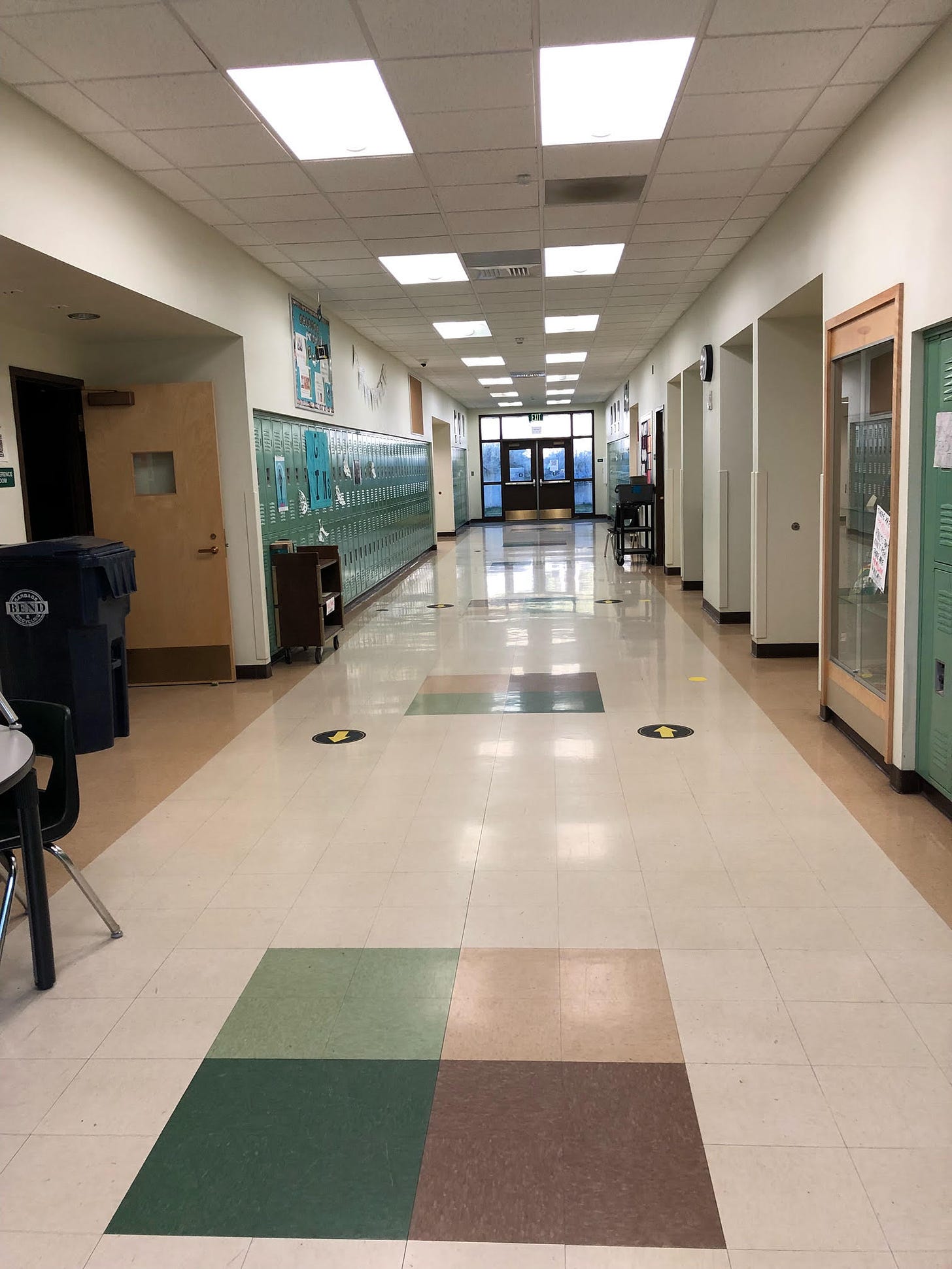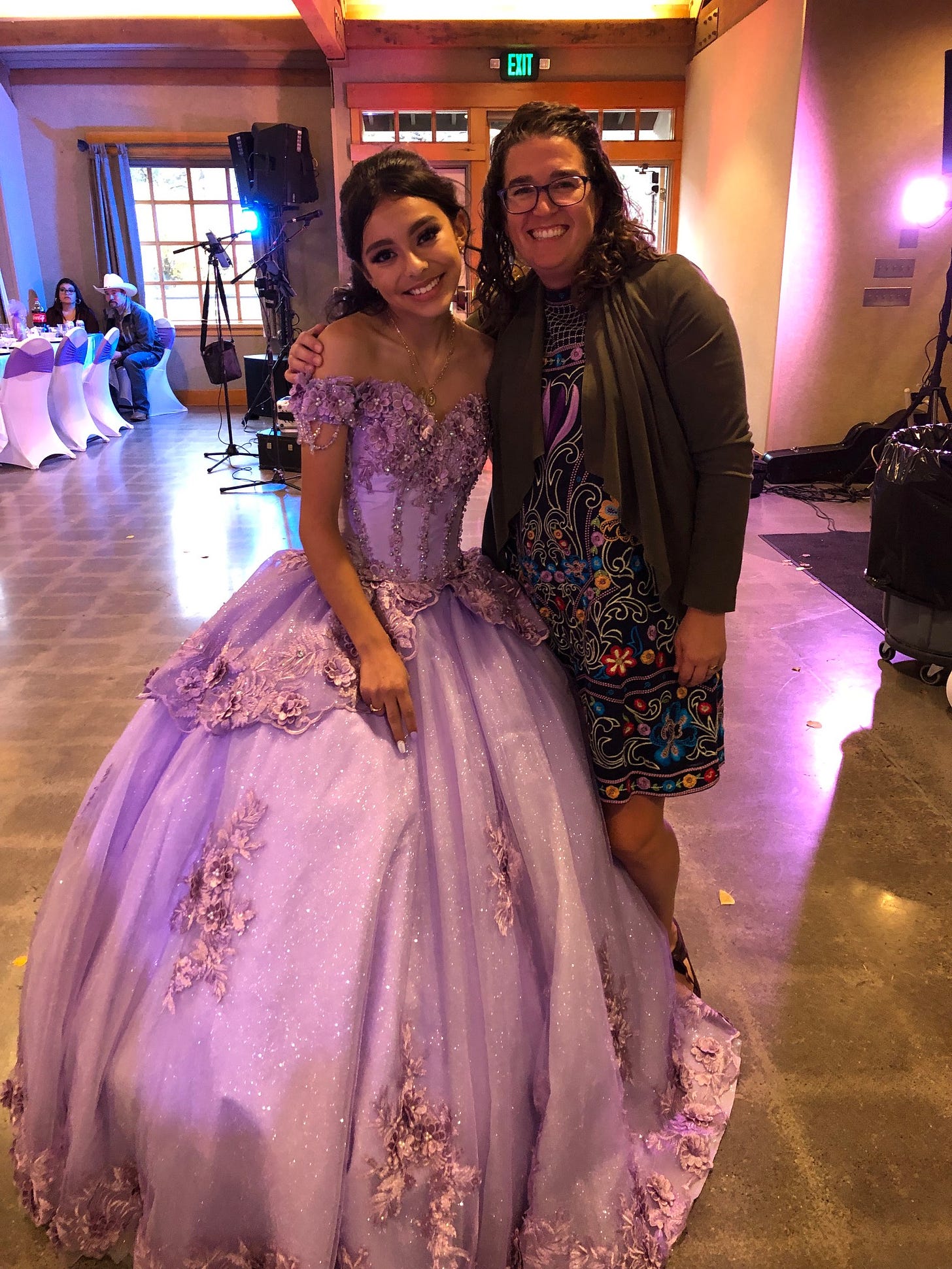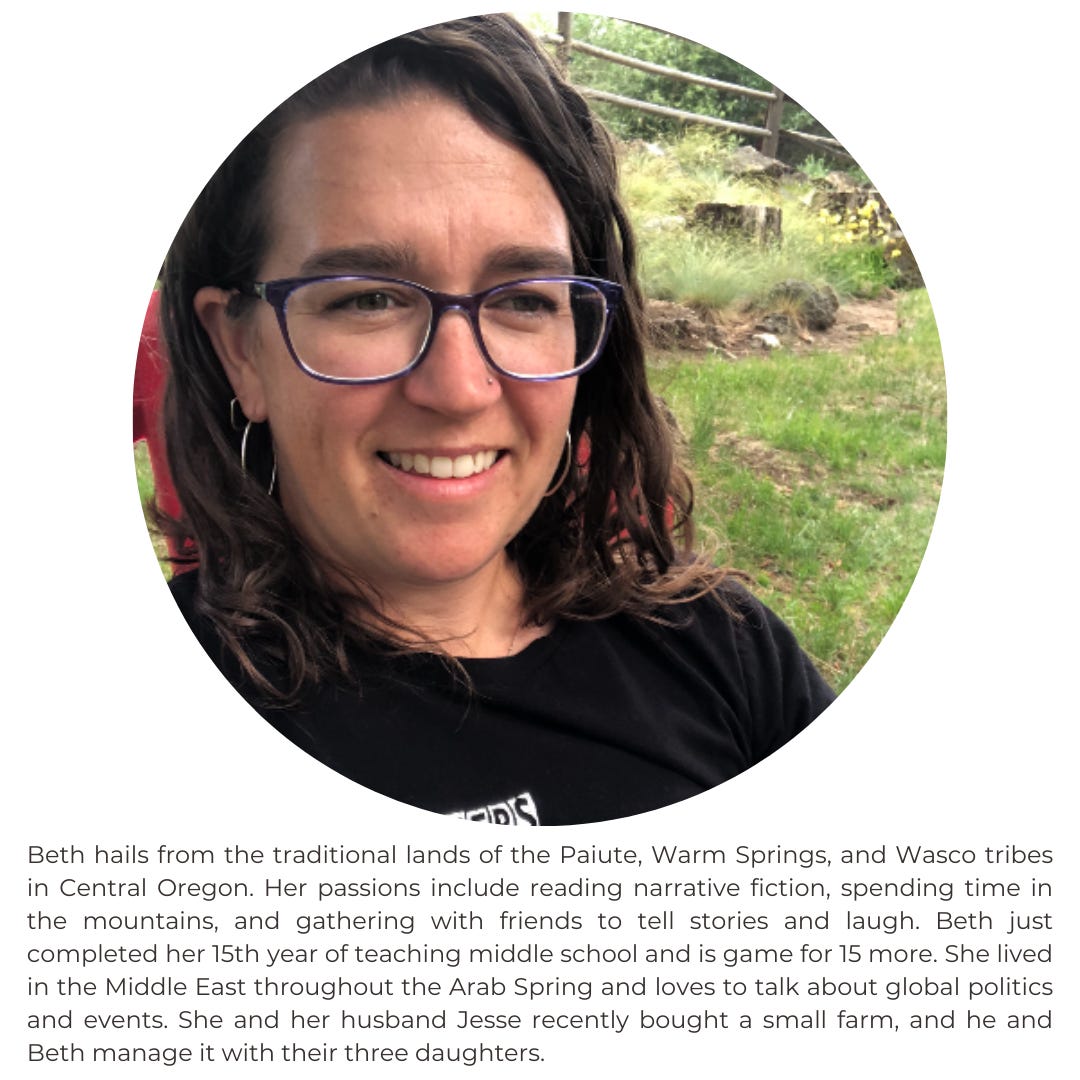Welcome to The Learning Curve, a weekly newsletter to share our understandings, joys, and learnings through personal narrative. Our writers span many generations, cultures, identities, and ethnicities.
We’d like to welcome our recent new subscribers! If you haven’t subscribed yet, please join us!
We’re so happy you’re here!
As the school year winds down, you may know (or be!) a teacher who could very well be at the end of their rope. This time of year is difficult for any teacher, but teaching the past few years has left an immeasurable burden on our teachers and educational system. A frequent contributor of ours, Beth Rasmussen, shares her thoughts on what it means to be a teacher in this moment and how she’s been called to push in when her tank is nearly empty. I’ve seen Beth in action with her students and the connections she shares about below are so authentic that it’s readily apparent Beth was always meant to be an educator. Beth is also proof of one of the key secrets about good teachers: The best ones are those who learn just as much from their students as their students learn from them.
And if you know a teacher, consider taking her/him a cup of coffee or a small bouquet of flowers this week. You have no idea how much it would mean to them. —Molly
I ran into a friend at the grocery store recently; she had a cartload of groceries, like a normal person. I was holding seven chocolate bars. I tried to justify them by telling her what my job had been like in recent weeks. She’s a public health care worker and could relate to the desire to consume copious amounts of chocolate.
“I worry about the lasting effect of high stress over such a long time,” she said.
I can’t stop thinking about that statement. I’ve been able to think constructively about how it’s impacting my professional life. It will take much longer to sort out the personal repercussions.
After 16 years of teaching middle school, I still love this age group; they are insightful, engaging, and willing to build relationships. They are still children, young in heart and mind, but teetering on the edge of the great unknowns of adulthood. They are uncomfortable in themselves, seeking acceptance and a sense of self. I love listening to their ideas, helping them ask hard questions, and accepting answers that are just as challenging.
The COVID years have been the hardest of my career. The effects of isolation, interrupted learning, heightened stress, and global uncertainty have complicated the return to in-person school. My responsibilities have grown. I am stretched thin by a sense of constantly being in danger because I’m an immunocompromised body exposed to 90+ students each day as a half-time teacher.
Sometimes the night before a school day, my breath feels short. I lie down, only to find I’m wide awake, growing more exhausted by the minute. I’m thinking about the kids that have stories of intoxicated parents or threatening siblings. The girls with cuts on their wrists. The ones whose personalities seem to change overnight. The children whose parents could lose their jobs or homes. The ones who are suffering abuse at the hands of people who should be protecting them. I think about the kids who are sleeping in tents and brainstorm ways to help them feel safe enough to learn.
Students are suffering from long-term stress, as I am, and it is challenging to mitigate that while trying to reach educational goals. I feel like a melting candle, wax dripping down the sides. I have wondered if I can keep this career up.

I recently read the book What Happened to You?: Conversations on Trauma, Resilience, and Healing, by Dr. Bruce D. Perry, and the queen herself, Oprah Winfrey. In a chapter entitled “Relational Hunger in the Modern World,” Dr. Perry writes:
“I think it would certainly be reasonable to consider relational poverty—lack of connectedness—as an adversity. Poverty of relationship can disrupt normal development, influence how the brain works, put you at risk for physical and mental health problems. It’s absolutely not good for you.”
I’m a dedicated introvert who would rather not admit anything like dependency; however, I’ve realized that I need interpersonal connections right now in a way that feels raw and vulnerable. I’m pushing back against my inclinations to turn inward, and instead, I’m leaning in to strengthen connections with my community and the world around me. I realize my students are in a similar situation.
As a result, I’m dedicating time to cultivating my students’ connections. They need this type of healing through connection, just as I do. Students greet one another by name each day and ask guided personal questions. I asked them to write and tell me anything they want. Most importantly, if they are not safe in their home, I ask them to please tell me.
A few students seemed shocked the first time I asked about their safety. By now, they expect me to keep asking throughout the year. It has strengthened my connection with them significantly. I hope that as time goes by, they’ll know I’m there for them. They share so freely, and I treasure their stories.

My students are eleven or twelve years old. The things they share are both wonderful and heartbreaking. Students tell how excited they are for their next ball game, or that they can’t wait to celebrate their grandpa’s birthday. They reveal they’re hurting because their pet newt died. They say they hate it when their parents argue. They reflect that they’ve lost four extended family members in the last year, and they space out at school, wondering why they can’t stay focused. They write that when their mom told them she’s having another baby, they hid in their room for the rest of the day, overwhelmed by the amount of childcare for which they will be responsible. One thinks their friends have forgotten them, while another says they’re lonely at school each day because they haven’t made a real friend yet. They tell me they’re uncomfortable with their bodies and their clothes. They share about their grandmother in Ukraine, and their mother’s worry.
All I had to do was push that door open a little. My students are teaching me about vulnerability and connection again, and I can’t help but gush about the amazing people they are becoming.
Maybe it isn’t so different with adults. The pandemic has accentuated our disconnection and reminded us how much we need the people around us. I don’t want to go back to normal without shifting my practice regarding success and value. I want to show my students every day that connection is more important to their well-being than a high salary or the “perfect” job. Each little connection, each story, and each shared laugh or sorrow is one more bond holding us all together through trial and triumph. And that is how we heal.
Beth’s Five Recommended Books (that have helped manage the impact of a high-stress season):
What Happened to You?: Conversations on Trauma, Resilience, and Healing, by Bruce D Perry and Oprah Winfrey. If you find the facts about brain function helpful in understanding stress and trauma, this is a wonderful read. It makes an excellent companion to the widely-read Educated: A Memoir, by Tara Westover.
The Backyard Homestead, edited by Carleen Madigan. Few things are as soothing as getting my hands muddy in the spring. While the temperatures are still cold, I’ve been mapping and planning with friends. This book is my best inspiration and planning tool. Best to companion read with The Seed Keeper: A Novel.
The Sibley Guide to Birds, written and illustrated by David Allen Sibley. We are lucky enough to see owls flying from the forest next to our home several times a week. Great Horned Owls with Adult Pacific and Eastern plumage, to be specific. See the book for context, and start a new, completely free hobby.
People We Meet on Vacation, by Emily Henry. I haven’t been traveling as much as I wish, and this work of fiction took me on a rom-com-style series of vacations in the best way. It has been passed all around my friends too, and then we had a good laugh about it over dinner.
100 Hikes/Travel Guide: Central Oregon Cascades, by William L. Sullivan. Hiking is my favorite way to blend the connection between nature and friendships. This is the holy grail of Central Oregon hike books. Find a guide for your area and start making plans for this summer!
With gratitude,
Beth Rasmussen
P.S. Where can you lean into connection this season? Share with us in the comments below.






Beth, you nailed it. Beautifully written. Thank you!
Wonderfully written.
Our school hosts a connection meeting on Fridays. It is a great way to stay connected with fellow coworkers. Many of our conversations help us realize we are not alone.